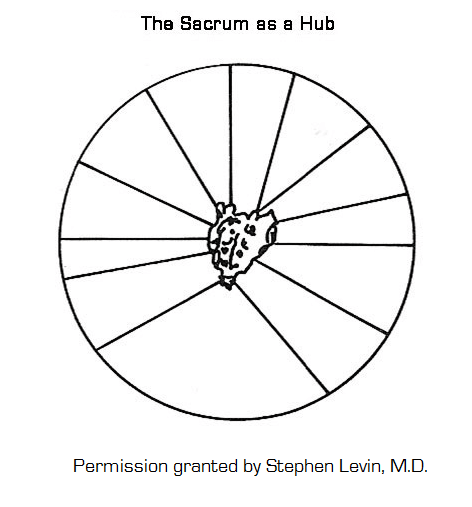Sacrum as a Hub

Levin [1] describes the suspension of the sacrum within three-dimensional space by comparing it to the hub of a wheel suspended by spokes. He stated “the sacrum is viewed as the hub of a tension network: the model provides for stability of the sacrum when it is loaded from any direction and can be used during bipedal or quadrupedal standing and walking or even standing on one’s head…in contrast to the keystone and similar models. Since the system requires low energy, it is favored by nature.” In this model, all of the supporting elements must be tensioned equally to maintain stability, in accordance with the principles of tensegrity, as described by Buckminster Fuller [2].
As the wheel rotates, the load is distributed among all of the spokes that attach to the hub, resulting in equal tension on all spokes. Weight transfer in the sacroiliac joint, instead of occurring on a rotating hub, alternates from side to side and occurs on the side of the sacrum that is in nutation. The ligaments that restrict nutation carry the load. Those that restrict counternutation are under tension when non-load-bearing but function mainly to limit the range of motion. If either type of ligaments becomes sprained, they will create instability and disrupt load transfer at the body’s core.
References:
- Levin, S.M., The Sacrum in Three-Dimensional Space. Spine: State of the Art Reviews, 1995. 9(2): p. 381-88.
- Fuller, R.B., Synergetics. 1975, New York: McMillan.

